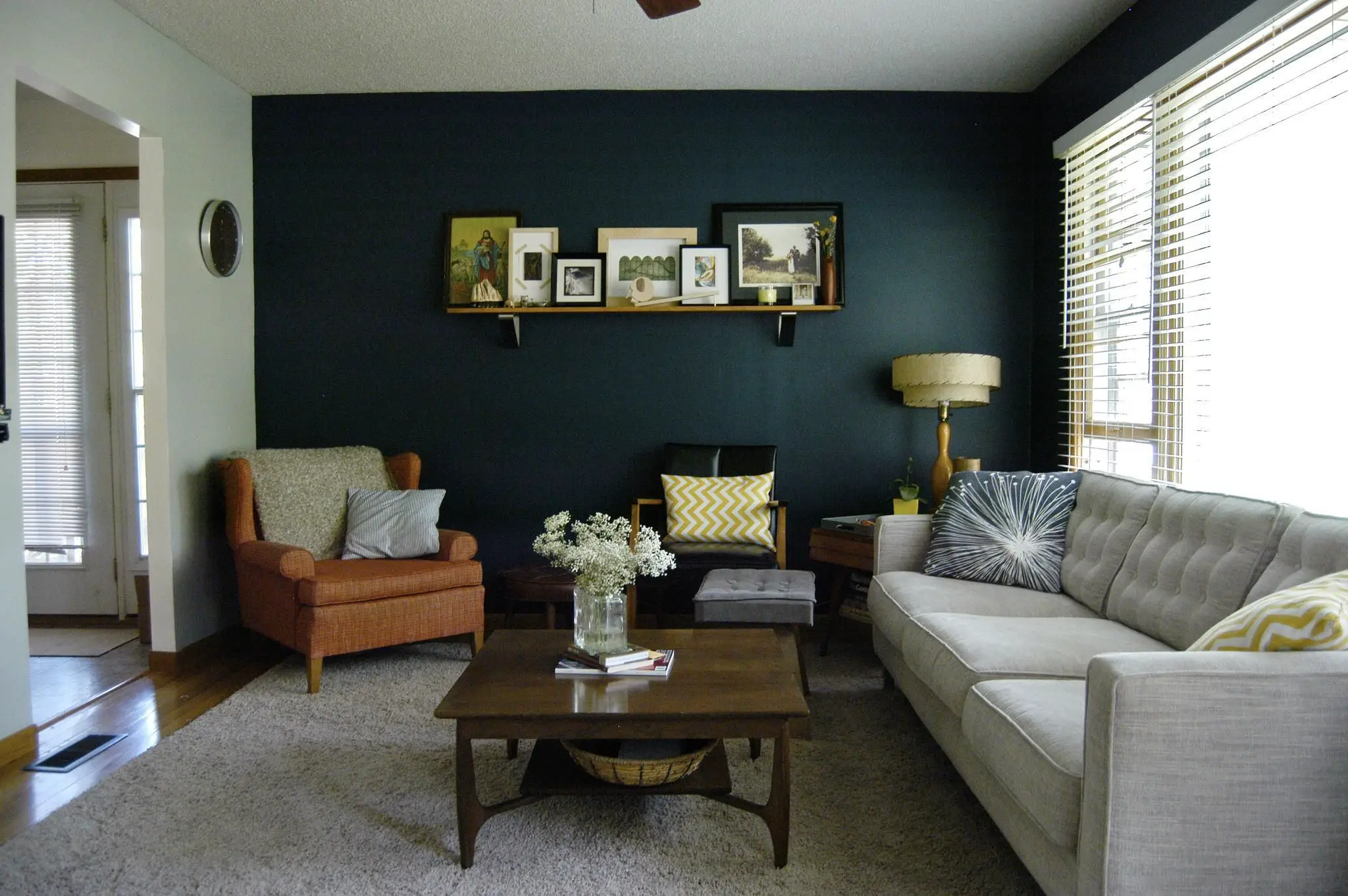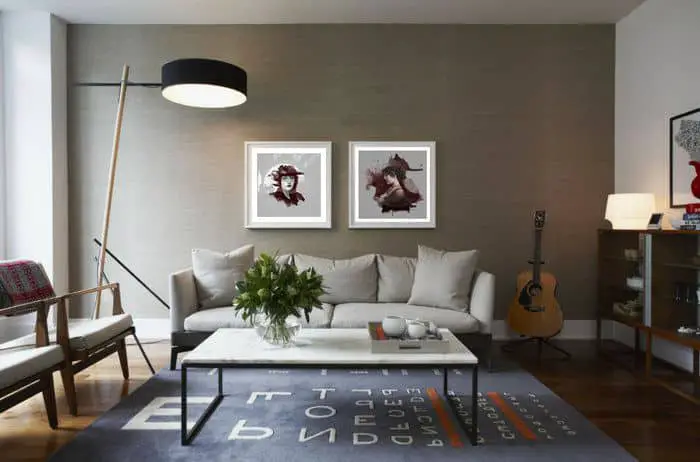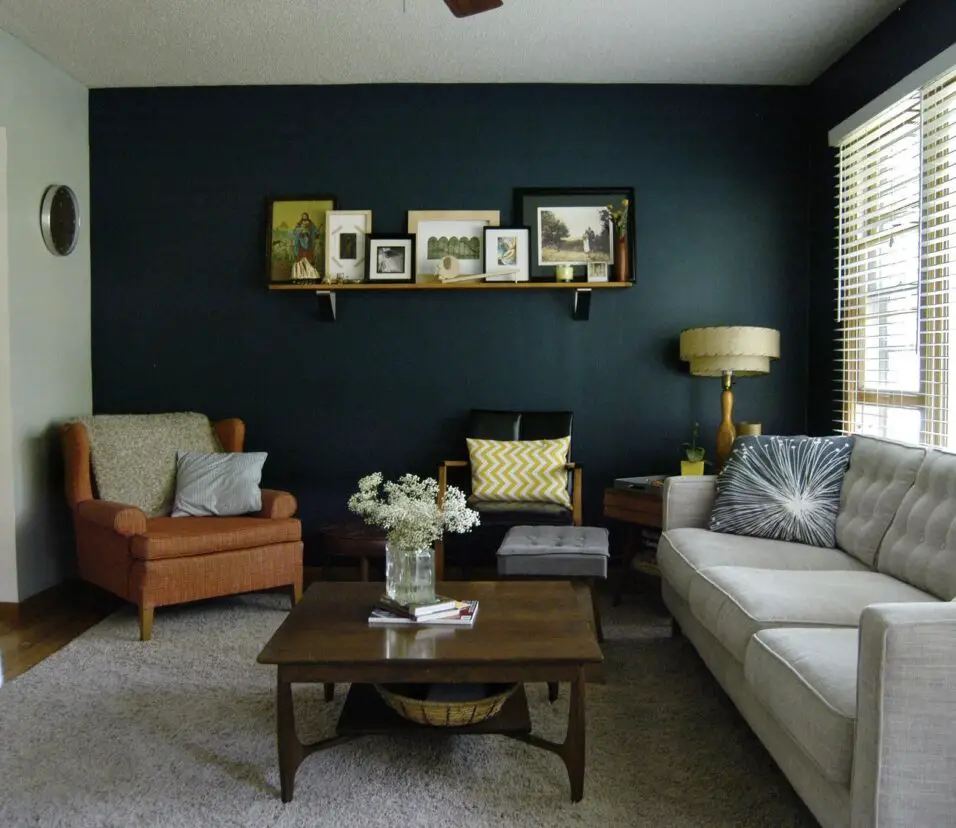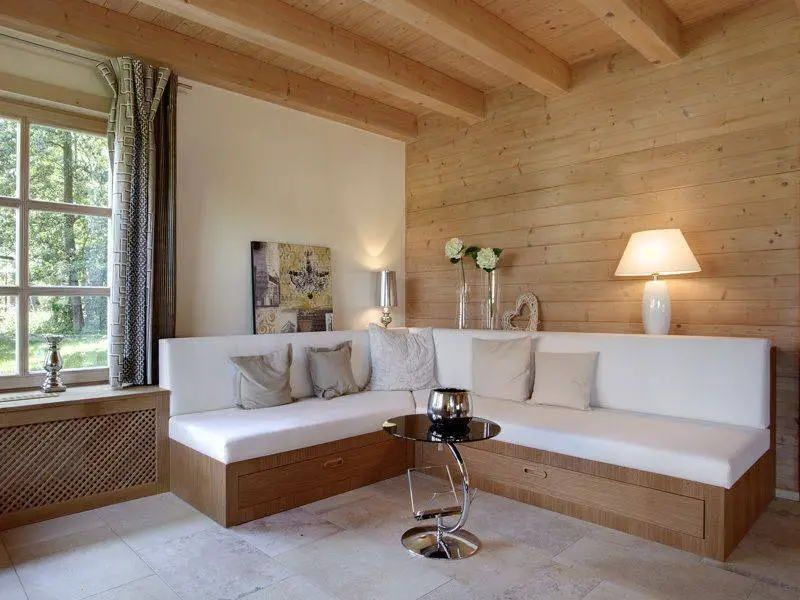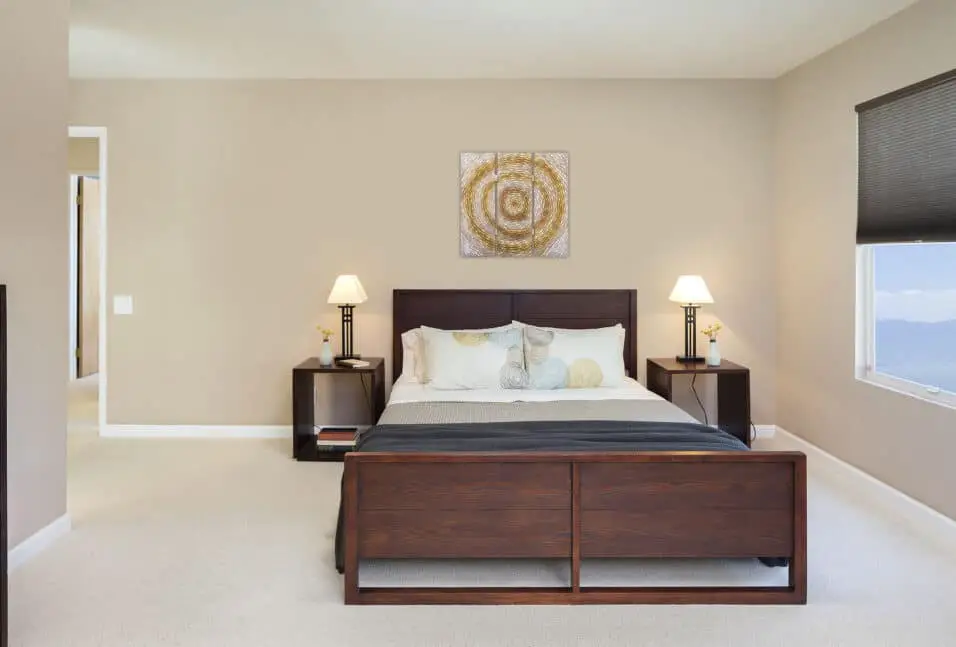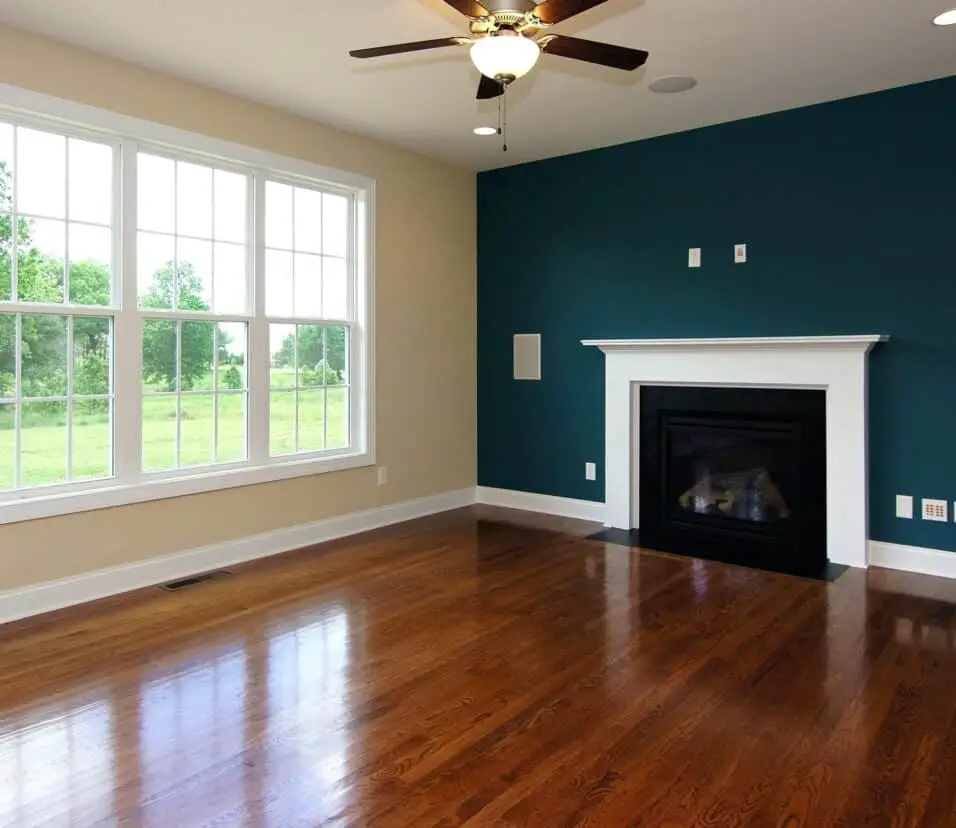How To Choose Which Wall To Accent
Introduction
How To Choose Which Wall To Accent: Choosing the right wall to accent in your home can be a daunting task. With so many options available, it can be overwhelming to decide which wall will best showcase your personal style and enhance the overall aesthetic of your space. However, with a few key considerations and some creative thinking, you can easily determine the perfect wall to accentuate and transform your living environment.
First and foremost, it is important to understand the purpose of accent walls. An accent wall is a focal point in a room that stands out from the rest of the walls, creating visual interest and adding depth to the space. It serves as a canvas to display artwork, highlight architectural features, or simply make a bold statement. By strategically choosing the right wall to accent, you can elevate the ambiance of your room and create a visually appealing environment.
When deciding which wall to accent, consider the room’s layout and function. Is it a living room, bedroom, or kitchen? Each room has its own unique characteristics and requirements. For instance, in a living room, the wall behind the sofa or the one facing the entrance can be ideal choices for accentuation. In a bedroom, the wall behind the headboard can create a cozy and intimate atmosphere. In a kitchen, the wall behind the dining area can serve as a focal point for family gatherings.
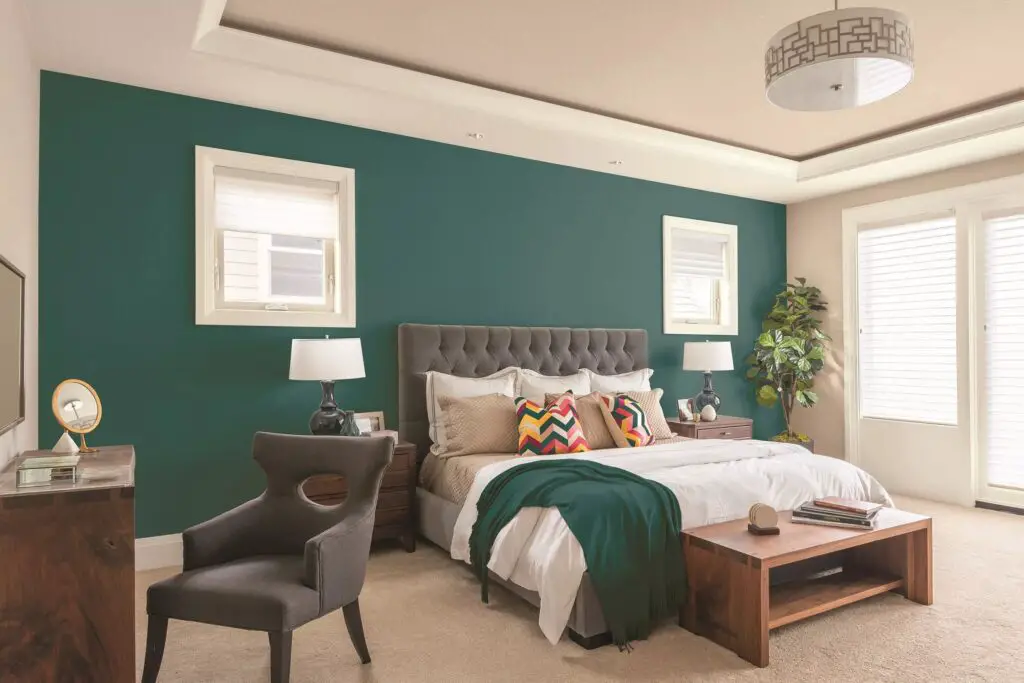
Which wall should be my accent wall?
In general, the right wall to accent is usually the first one that you see when you enter a room. You and your guests will always have it in view. 2. Look for other architectural clues, such as a fireplace, built-in bookcases, or architectural nooks.
When it comes to interior design, choosing an accent wall can greatly enhance the overall aesthetic appeal of a room. An accent wall serves as a focal point, adding depth, visual interest, and personality to the space. However, deciding which wall should be your accent wall requires careful consideration of various factors such as room size, lighting, existing decor, and personal preferences. In this article, we will explore different aspects to help you make an informed decision on selecting the perfect accent wall for your space.
Room Size and Layout:
The size and layout of the room play a crucial role in determining the ideal accent wall. If you have a small room, it is generally recommended to choose a wall that is opposite the entry point. This placement creates an illusion of depth and makes the room appear larger. On the other hand, in larger rooms, you have more flexibility in selecting the accent wall. Consider walls that are naturally prominent or those that can showcase a particular architectural feature, such as a fireplace or a large window.
Lighting:
Lighting is another important factor to consider when deciding on an accent wall. Natural and artificial lighting can significantly impact the appearance of a wall. If your room receives ample natural light, you may want to choose a wall that is well-lit throughout the day. This will allow the accent wall to stand out and create a vibrant atmosphere. In rooms with limited natural light, you can strategically place lighting fixtures to highlight the accent wall and create a cozy ambiance.
Existing Decor and Color Scheme:
Take into account the existing decor and color scheme of the room. The accent wall should complement the overall design and not clash with the existing elements. Consider the dominant colors in the room and choose a wall color that harmonizes with them. If your room features neutral tones, you can opt for a bold and vibrant accent wall to create a striking contrast. Conversely, if your room already has a bold color scheme, a more subtle accent wall can provide a balanced and sophisticated look.
Personal Preferences:
Ultimately, your personal preferences should guide your decision-making process. Consider your style, taste, and the mood you want to create in the room. If you have a favorite color or a particular pattern that resonates with you, incorporating it into the accent wall can bring a sense of individuality and personal touch to the space. Remember, the accent wall should reflect your personality and create a space that you truly enjoy and feel comfortable in.
What is the rule for accent walls?
Go with a color that is darker than the other walls in the room. A darker hue will contrast with the lighter walls and pull eyes straight to it, which is what you want. A good rule of thumb is to paint the accent wall the same color as the other walls, but 2 shades darker.
An accent wall is a common interior design approach that paints or decorates one wall differently. This technique adds visual intrigue, a focal point, and aesthetic appeal to a place. Based on the room’s style and desired effect, accent walls can be made of various materials, colors, patterns, and textures.
One of the key accent wall rules is to accentuate the right wall. The accent wall is usually the wall opposite the entryway or behind the major furniture, like a bed or sofa. This arrangement makes the accent wall the room’s main point when people enter. It also gives the room balance and harmony.
Rule for accent walls
There are some tips for choosing accent wall colors. The colour should match the room’s scheme and contrast with the other walls. Choose a darker or brighter shade of the same hue or a different color that matches the palette to create this contrast. Accent walls can be painted in bright colors for a dramatic effect or in muted tones for a more sophisticated aesthetic.
Accent walls can include color, patterns, and textures. Wallpaper, stencils, and textured paint can lend dimension and visual interest to the wall. These pieces can add patterns like stripes, geometric forms, and floral themes to the room’s décor. The accent wall patterns and textures should match the current decor and not overpower the space.
Overall, the rule for accent walls is to create a visually appealing focal point that enhances the overall design of a room. By carefully selecting the right wall, color, and decorative elements, an accent wall can transform a space and add a touch of personality and style. Whether it is through bold colors, intricate patterns, or textured finishes, accent walls offer endless possibilities for creativity and can truly elevate the aesthetic appeal of any room.
How do I choose an accent wall color?
The Most Important Tip for How to Pick an Accent Wall Colour
- Think About Your Existing Decor. Start by looking at your home’s existing decor and figuring out what colour palette you’d like to work with. …
- Choose A Colour Scheme.
- Accessorize with Accents.
- Test Your Colour Choice.
Choosing an accent wall color can be a fun and creative way to add personality and style to any room in your home. Whether you want to create a focal point, highlight architectural features, or simply add a pop of color, an accent wall can make a big impact. However, with so many color options available, it can be overwhelming to decide on the perfect hue. In this guide, we will provide you with some helpful tips and considerations to make the process of choosing an accent wall color easier and more enjoyable.
Consider the overall color scheme of the room. Take into account the existing colors of the furniture, flooring, and other elements in the space. You want the accent wall color to complement and enhance the existing palette, rather than clash or overpower it. Look for colors that harmonize with the room’s dominant hues, whether they are warm or cool tones.
choose an accent wall color
Think about the mood or atmosphere you want to create in the room. Different colors evoke different emotions and can have a significant impact on the overall ambiance. For example, if you want to create a calm and serene environment, consider using soft blues or greens. On the other hand, if you want to add energy and vibrancy, opt for bold and vibrant colors like red or orange.
Another important factor to consider is the size and shape of the room. Darker colors tend to make a space feel smaller and more intimate, while lighter colors can make a room appear larger and more open. If you have a small room, you may want to choose a lighter accent wall color to create the illusion of space. Conversely, if you have a large room, you can experiment with darker and bolder colors to add drama and depth.
Paint samples on the wall and observe how they look in different lighting conditions throughout the day. Colors can appear different depending on the amount of natural light in the room, so it’s essential to see how they interact with the space. Additionally, consider the purpose of the room. For example, if it’s a bedroom, you may want to choose a soothing and relaxing color, while a home office may benefit from a more stimulating and energizing hue.
How do I choose a feature wall?
5 expert tips to creating a feature wall
- The wall you choose to highlight should ideally be the space to which your eye is first drawn when you enter the room.
- Be brave with your paint colours. …
- If you’d like to add extra interest, try adding a striking striped effect using harmonious hues.
Choosing a feature wall can be an exciting and creative process that allows you to add personality and style to your space. Whether you want to create a focal point in a room or highlight a specific architectural element, a feature wall can make a significant impact on the overall aesthetics of your home. In this article, we will explore various factors to consider when selecting a feature wall and provide you with valuable tips to help you make an informed decision.
Factors to Consider:
When choosing a feature wall, it is essential to consider several factors to ensure that it complements your existing decor and enhances the overall ambiance of the room. Firstly, think about the purpose of the feature wall. Are you looking to create a bold statement or a subtle accent? Understanding the desired effect will help you determine the appropriate color, pattern, or texture for your feature wall.
Color:
The color of your feature wall plays a crucial role in setting the mood and atmosphere of the room. Bold and vibrant colors such as red, orange, or deep blue can create a dramatic effect, while softer hues like pastels or neutrals can provide a more calming and soothing ambiance. Consider the existing color scheme of the room and choose a color that complements or contrasts with it to create visual interest.
Pattern and Texture:
In addition to color, patterns and textures can add depth and dimension to your feature wall. Whether you opt for a geometric pattern, floral design, or textured wallpaper, make sure it aligns with your overall interior style. Patterns can create a sense of movement and energy, while textures like brick, wood, or stone can add a touch of warmth and authenticity to the space.
Location:
Another important thing to think about is where your main wall will go. Usually, feature walls are put in places that naturally draw attention, like behind the bed in a bedroom or behind the sofa in a living room. But you can also choose to draw attention to building features like a fireplace or an alcove. Look at how the room is set up and choose a wall that will show off your highlight wall the best.
When choosing a feature wall, you need to think carefully about things like color, pattern, texture, and position. By knowing what the feature wall is for and matching it to your general interior style, you can make a visually appealing focal point that makes your space feel better. Remember to try out different things and go with your gut to choose a feature wall that fits your style and gives your home a unique touch.
Should accent wall be lighter or darker?
Ultimately, the color of the accent wall should complement the existing design elements in the room. It really depends on the size of the room and the look that you are going for. Generally, a lighter shade on an accent wall will make a space look larger, while a darker one will make it look cozier.
An accent wall can be a great way to add visual interest and depth to a room. It serves as a focal point and can enhance the overall aesthetic appeal of the space. When deciding on the color for an accent wall, one common question that arises is whether it should be lighter or darker than the surrounding walls. This decision depends on various factors, including the size of the room, the desired effect, and the existing color scheme.
Size of the Room:
The size of the room plays a crucial role in determining whether the accent wall should be lighter or darker. In smaller rooms, using a lighter color for the accent wall can create an illusion of space and make the room appear larger. Lighter colors reflect more light, making the walls recede visually. On the other hand, in larger rooms, a darker accent wall can add depth and create a cozy atmosphere. Darker colors absorb light, making the wall appear closer and more intimate.
Desired Effect:
The desired effect also influences the decision of whether the accent wall should be lighter or darker. If the goal is to create a bold and dramatic statement, a darker accent wall can achieve that effect. It can add a sense of sophistication and elegance to the room. Conversely, if the aim is to create a subtle and understated look, a lighter accent wall can be more suitable. Lighter colors can create a sense of tranquility and serenity, making the room feel more relaxed and inviting.
Existing Color Scheme:
When choosing an accent wall color, examine the room’s color scheme. A lighter accent wall can brighten a gloomy area and prevent it from seeming too crowded. In contrast, a darker accent wall can balance and give visual interest to a room with light walls.
Whether an accent wall should be lighter or darker depends on the size of the room, the desired effect, and the existing color scheme. Lighter accent walls can make small rooms appear larger and create a serene atmosphere, while darker accent walls can add depth and create a bold statement. Considering these factors and experimenting with different colors can help determine the perfect shade for an accent wall that enhances the overall aesthetics of the room.
Several variables should be considered while choosing a room’s accent wall. First, decide the accent wall’s purpose. Is it supposed to draw attention, highlight an architectural aspect, or offer visual interest? Understanding the accent wall’s purpose will help choose a place. Room layout and movement are also crucial. Place the accent wall strategically to improve the room’s design and balance. Choosing a wall that is visible from the main entry or naturally draws attention, like behind a bed or fireplace, is ideal.
How can the existing decor and color scheme influence the choice of accent wall?
When deciding which wall to accent in a room, it is important to consider the existing decor and color scheme. The choice of accent wall should complement and enhance the overall aesthetic of the space. The existing decor and color scheme can greatly influence this decision.
The first factor to consider is the color palette of the room. If the room already has a dominant color scheme, such as neutral tones or bold hues, the accent wall should be chosen to harmonize with these colors. For example, if the room has a predominantly neutral color scheme with shades of beige and white, a warm accent wall in a complementary color like soft gray or taupe can add depth and visual interest without overpowering the existing decor.
Another consideration is the style of the existing decor. If the room has a modern or minimalist design, a bold and vibrant accent wall can create a striking focal point. On the other hand, if the decor is more traditional or classic, a subtle and understated accent wall in a complementary shade can add elegance and sophistication to the space.
In addition to color and style, the existing furniture and accessories should also be taken into account. The accent wall should not clash with or compete with the furnishings in the room. Instead, it should complement and enhance their visual appeal. For example, if the room has a statement piece of furniture or artwork, the accent wall can be chosen to highlight and showcase these items.
The existing decor and color scheme play a crucial role in determining the choice of accent wall. By considering the color palette, style, and existing furnishings, one can create a cohesive and visually pleasing space that is enhanced by the addition of an accent wall.
Are there any specific architectural features or focal points that should be taken into account when selecting an accent wall?
When selecting an accent wall, it is crucial to consider the specific architectural features and focal points within the room. These elements play a significant role in determining the most suitable wall for accenting. Architectural features such as fireplaces, built-in shelves, or unique wall textures can serve as natural focal points that draw attention. By accentuating these features, you can enhance their visual impact and create a more cohesive and visually appealing space.
For example, if your room has a stunning fireplace, selecting the wall behind it as the accent wall can help highlight this architectural feature and make it the focal point of the room. Similarly, if there are built-in shelves or niches, choosing the wall that houses these elements as the accent wall can add depth and dimension to the overall design.
By carefully considering the architectural features and focal points, you can strategically choose the accent wall that complements and enhances the existing elements in the room. This thoughtful approach ensures that the accent wall not only stands out but also harmonizes with the overall aesthetic of the space.
What impact does the lighting in the room have on the decision of which wall to accent?
The lighting in a room plays a crucial role in determining which wall should be accentuated. The intensity, direction, and color of the lighting can significantly impact the overall look and feel of the accent wall. When deciding which wall to accent, it is important to consider how the lighting will interact with the chosen wall.
Intensity: The brightness of the lighting can draw attention to the accent wall. If the room has a strong source of natural light or bright artificial lighting, it is advisable to choose a wall that can handle the intensity without appearing washed out or overwhelming. On the other hand, if the room has softer, ambient lighting, a darker or more vibrant accent wall can create a striking contrast.
Direction: The direction of the lighting can create shadows and highlights on the accent wall, enhancing its visual appeal. It is essential to consider the placement of light fixtures and windows when selecting the wall to accent. Walls that receive direct light or have interesting shadow patterns can be ideal choices for accentuation, as they will create depth and visual interest.
What impact does the lighting in the room have on the decision of which wall to accent?
The lighting in a room plays a crucial role in determining which wall should be accentuated. The intensity, direction, and color of the lighting can significantly impact the overall look and feel of the accent wall. When deciding which wall to accent, it is important to consider how the lighting will interact with the chosen wall.
Intensity: The brightness of the lighting can draw attention to the accent wall. If the room has a lot of natural light or bright artificial lighting, it is advisable to choose a wall that can handle the intensity without appearing washed out or overwhelming. On the other hand, if the room has dim lighting, selecting a wall with lighter colors or reflective surfaces can help enhance the brightness and create a visually appealing focal point.
Direction: The direction of the lighting can create shadows and highlights on the accent wall, adding depth and dimension to the space. It is important to consider the placement of light fixtures and windows when choosing the accent wall. Walls that receive direct light or have interesting shadow patterns can be ideal for accentuating architectural features or textured surfaces.
Color: The color temperature of the lighting can significantly affect the appearance of the accent wall. Warm lighting, such as incandescent bulbs, can enhance warm-toned accent walls, creating a cozy and inviting atmosphere. Cool lighting, like fluorescent or LED lights, can complement cool-toned accent walls, providing a modern and refreshing ambiance. It is essential to consider how the lighting color will interact with the chosen wall color to achieve the desired effect.
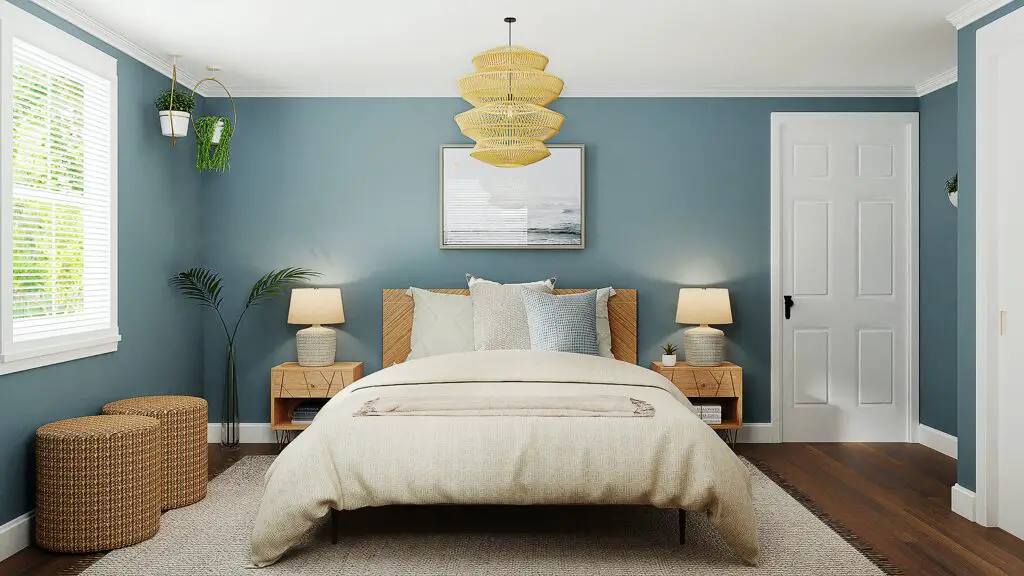
Conclusion
Choosing which wall to accent in a room can greatly enhance the overall aesthetic and create a focal point that draws attention. With the right selection, an accent wall can transform a space from ordinary to extraordinary. However, the decision-making process can be overwhelming, as there are several factors to consider. By following a few key guidelines, one can confidently choose the perfect wall to accent, ensuring a harmonious and visually appealing result.
Firstly, it is important to assess the room’s layout and architectural features. Take note of any existing focal points, such as a fireplace or large windows, as these elements can influence the choice of accent wall. It is generally recommended to select a wall that is naturally prominent or one that can be easily emphasized. For instance, a wall with unique architectural details, such as exposed brick or intricate molding, can be an excellent candidate for accentuation. By highlighting these existing features, the accent wall can seamlessly integrate into the overall design scheme.
Another crucial consideration is the color palette of the room. The accent wall should complement the existing colors and create a sense of harmony. One popular approach is to choose a color that is already present in the living room, but in a bolder or more intense shade. This creates a cohesive look while adding visual interest. Alternatively, selecting a contrasting color can make a bold statement and create a striking focal point. It is important to strike the right balance between cohesion and contrast, ensuring that the accent wall enhances the room’s overall ambiance.



